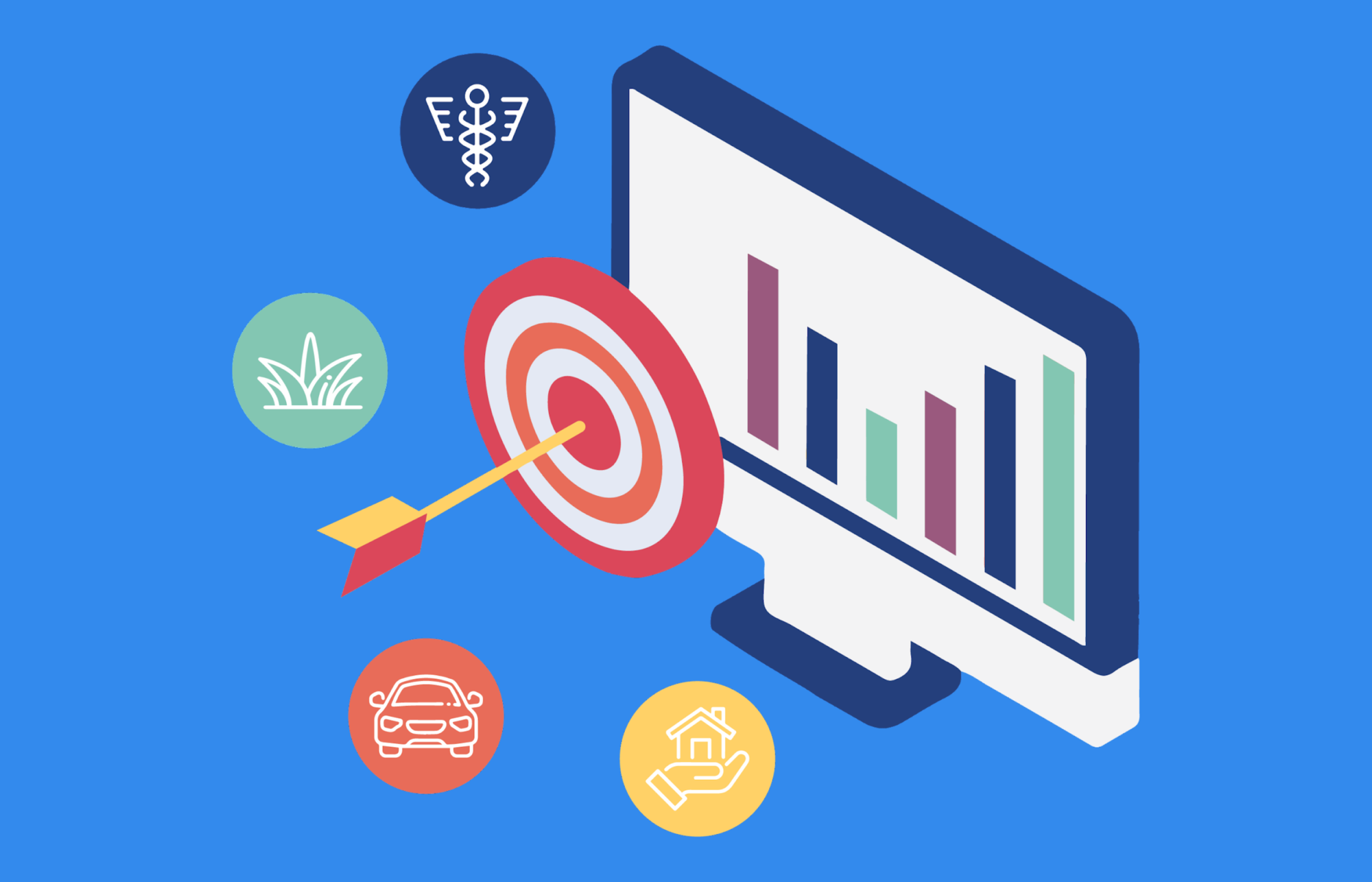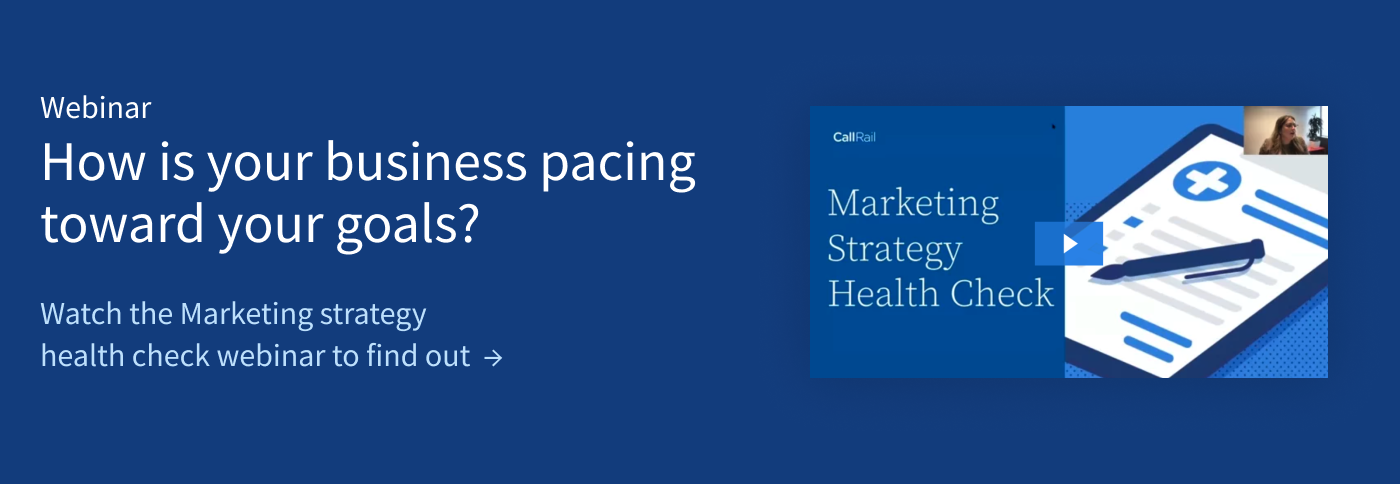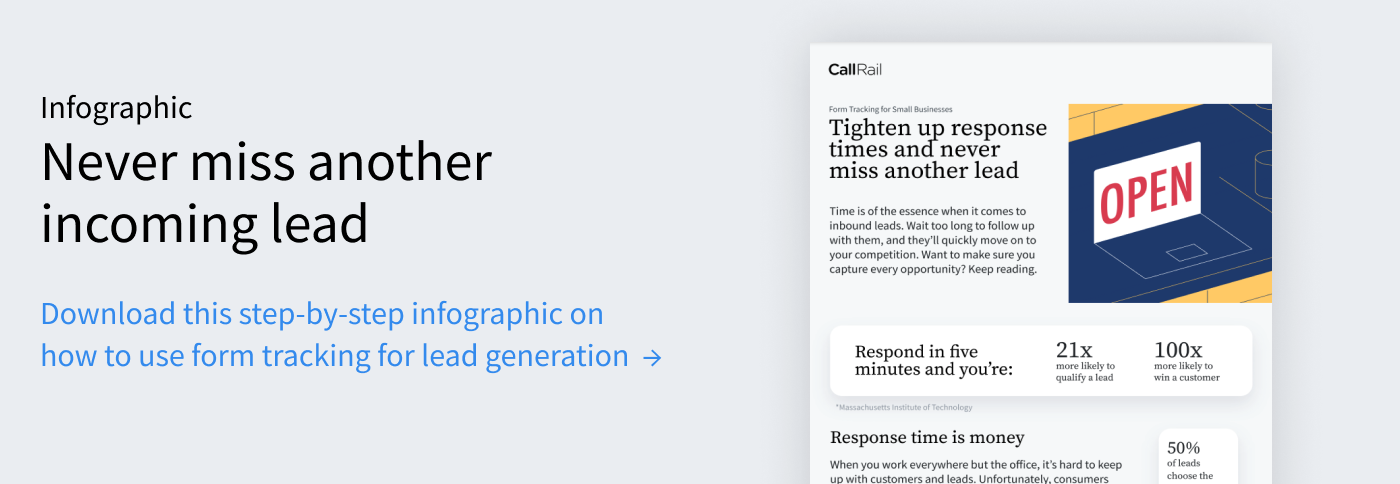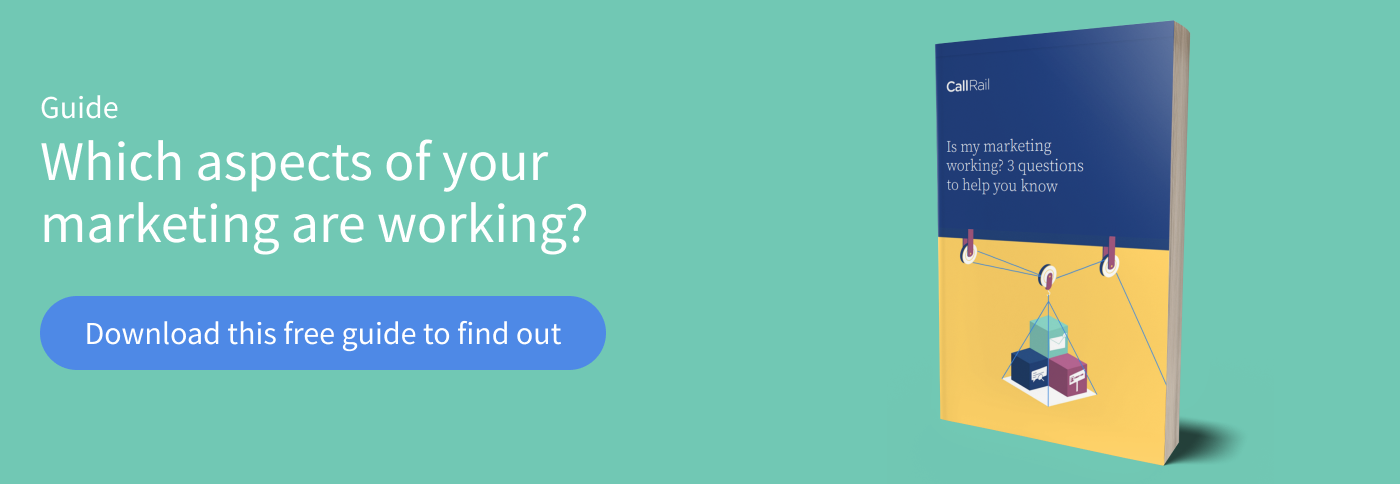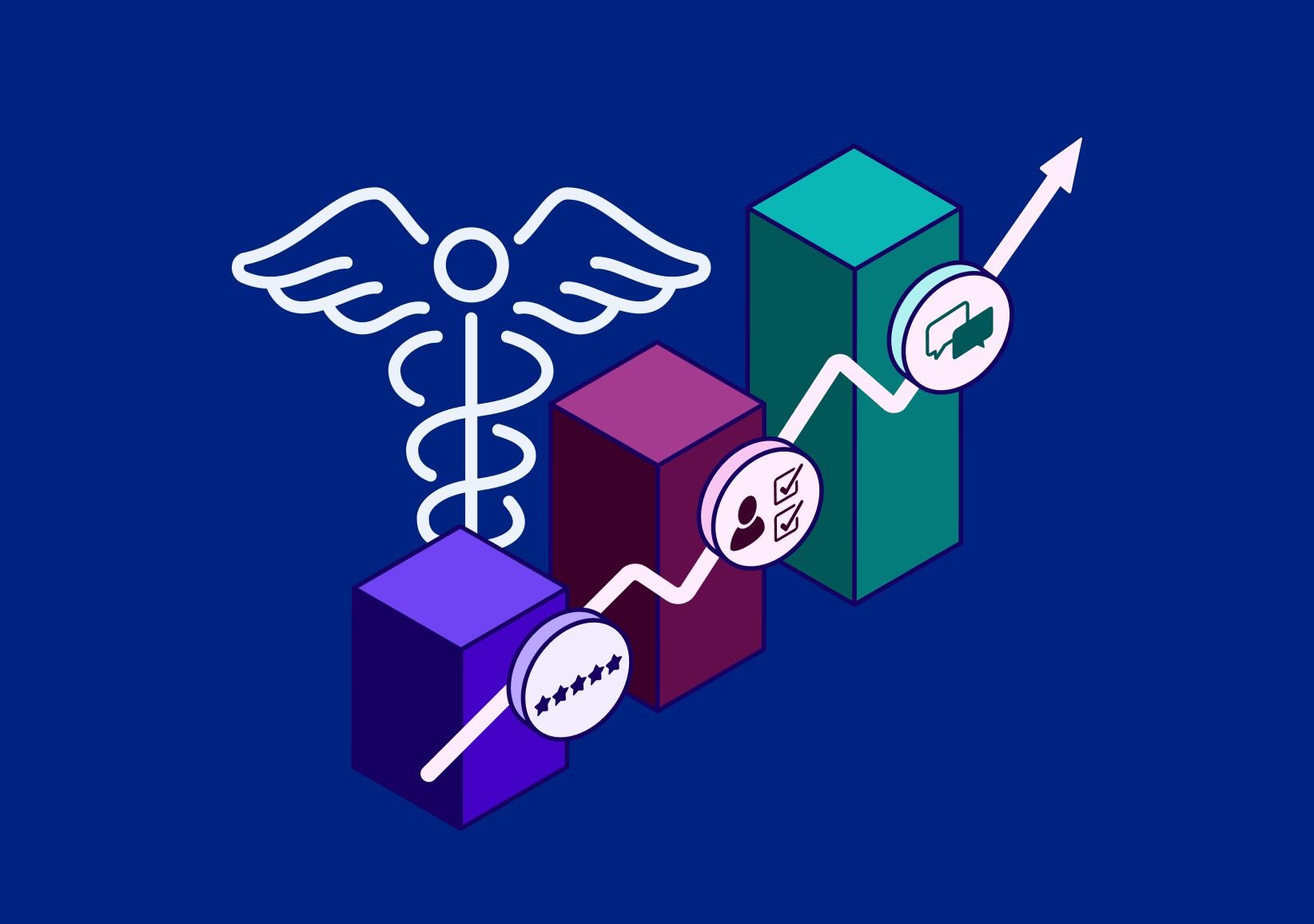Table of Contents
Jump to:
- Setting a strategy and a plan for your small business marketing
- Digital marketing vs. traditional marketing
- Lead generation
- Search Engine Optimization
- Search Engine Marketing
- Using your website to generate (the right) leads
- Email marketing
- Content marketing
- Social media
- Event marketing
- Measuring your marketing performance
Running a small business means you — and your employees — wear lots of hats. One of those hats is marketing, but marketing can be challenging for small and mid-size businesses because there are so many channels and so much to know. How do you not only find the time, resources, and budget — but know if you're doing it right and getting the greatest return on your investment?
Maybe you need to generate more leads. Maybe you're getting leads of varying quality, but you want to focus on high-value leads for your most lucrative products or services. Maybe you need help nurturing and converting the leads you already have.
This comprehensive guide covers all the information and resources you need to market your small business effectively, from high-level strategy to marketing channel knowledge to gauging the success of your various marketing initiatives.
Let's get started.
Set a strategy for your small business marketing – and a plan to follow through
Before you engage in any marketing activity, the first step is to set your marketing strategy.
What's the difference between a marketing strategy and a plan? Strategy is the what behind the work, and the plan is the how and when of carrying out the work.
To set an effective strategy, you’ll want to identify your ideal customers and how to communicate with them. You’ll determine your business objectives and the marketing activities that can support them. And most importantly, you’ll test the business offerings and messaging that resonate with your ideal customers.
The plan consists of the specific actions you will take, or tactics you will use, to achieve your goals.
For example, your marketing strategy may include filling the pipeline for a newly introduced service, and raising general awareness of your business and its offerings. Your plan to do so may include tactics like targeting customers in nearby geographical areas using paid Facebook ads, growing an organic Instagram audience by following a regular posting cadence, and driving organic traffic to your website through content tailored to the needs of your ideal customers.
Goal-setting for your small business marketing
Before you can define and achieve your marketing goals, you first need to set your core business goals, whether generating more revenue or improving the customer experience. Once you've set your business goals, you can turn those into marketing goals.
Your marketing goals will be a result of breaking down your big business goals into smaller goals, such as gaining followers, growing an audience on a new social channel, or running paid promotions on social as a way to achieve your business goal of acquiring more customers. With tactics that ladder up to a big goal, it's easier to plan for and achieve your business objectives.
Determine which marketing tactics align with your strategy
While strategy defines where you want to go, tactics are the individual steps that will get you there. A good motto is, "Think strategically, act tactically."
Successful marketing is all about determining the best small business marketing tactics to help you achieve your goals. The best way to know which tactics will deliver the strongest results is to test them against your baseline. You can run A/B testing or small campaigns to see if they perform better than your general, “always on” campaigns and then scale up the tactics that deliver the most promising results.
Digital marketing vs. traditional marketing
The biggest difference between digital and traditional marketing is the channels you use.
As digital marketing implies, it involves digital channels like your website, social media, online advertising, and search engine optimization (SEO). Traditional marketing uses offline media channels like billboards, direct mail, radio, TV or streaming service commercials, and print magazine or newspaper ads.
While digital ads can be easier for performance tracking, using call tracking phone numbers on every traditional media campaign can help you similarly track traditional marketing campaigns.
For many growing small and mid-sized businesses, a mix of traditional and digital marketing can be an effective approach. For example, a law firm might employ a variety of digital strategies like paid and organic social media, a website with a focused SEO and conversion rate optimization (CRO) strategy, and out-of-home (OOH) media, such as radio, billboards, and bus wraps.
Choosing the right channels for your business
Not every marketing channel is right for every business. And with more channels emerging every day, it can be hard (if not impossible) to keep up. When you're choosing what channels to invest your marketing dollars and resources in, you need to be strategic.
First, determine your goals and know what you want to achieve. Consider what channels your customers are most likely to use. Then, test different channels and measure your results to determine which ones deliver the highest return on investment (ROI).
Popular marketing channels for small businesses
- Phone
- Billboard
- Radio
- Social media
- SMS/text
- Paid ads
- Google Business Profile
- Website
- Chat
Multi-channel marketing
Being present in multiple channels gives businesses the ability to create multiple touchpoints for customers, allowing each customer to use their preferred channel.
For instance, a mortgage loan officer might combine direct mail and social media to reach customers in a certain geographic location, encouraging them to call a trackable phone number to learn more about a special loan rate. A tax consultant could use a blend of pay per click ads, content marketing, and local radio broadcasting to promote a special tax-season discount on their tax filing services. Or a car dealership might use SMS/text to send out promotional offers or advertise big sales events to current customers and use radio ads to reach new audiences.
To make multi-channel marketing easier, make sure you invest in tools designed for small businesses (i.e., have enough features but aren't overly complex). The most common tools used as part of a multi-channel marketing strategy include a customer relationship management (CRM) solution, an email marketing platform, and a call tracking and analytics platform.
Lead generation for small companies
Lead generation is all about using marketing to get more appointments, consultations, or bookings — and ultimately more jobs or sales. Your lead generation strategy should focus on those prospects who are most likely to convert.
Typically, there are two ways to generate leads, either through inbound or outbound marketing tactics. Inbound marketing brings prospects to your business through tactics like content marketing, organic search, and social media — making your business helpful or appealing enough that people naturally find you. Outbound strategies involve directly reaching out to prospects through tactics like cold calling, direct mail, billboard, TV and radio ads, or pay-per-click ads.
For most small to midsize businesses, using a mix of both inbound and outbound marketing tactics is a good strategy. For example, a healthcare practice may work to generate leads by consistently creating content (content marketing) that is of interest to their patient population while also running pay-per-click ads.
How to track leads for your small business
One of the biggest challenges SMBs have with lead generation is keeping track of leads. Leads may come into the business in various ways — phone calls, website forms, chatbots, emails, even text messages.
Using a unified business communication center to capture, qualify, and nurture leads can significantly streamline the lead management process. For Screen Medic, a screen repair home services business, adopting a central inbox for all leads allowed them to capture missed calls and follow up — an opportunity they had been missing out on because there was no good way to know whether a teammate had picked up or responded yet.
A virtual phone system can also simplify lead management workflows by centralizing all communications in one place. For one asphalt paving company, by consolidating all their communications into a unified team workspace, they've doubled their sales and saved hundreds of dollars per month.
Watch this webinar to learn how to use a virtual phone system to centralize your lead workflows.
Search Engine Optimization
Search engine optimization (SEO) focuses on using frequently searched keywords to improve the possibility of your website or content appearing at the top of search results. To be successful at SEO takes time and the right strategic approach in both the types of content you create and the keywords you use in your content.
There are several tools that can help SMBs improve their SEO, including website performance and analytics, keyword research tools, and business listings and citation management. Creating a Google Business Profile (formerly Google My Business profile) is also important for improving your search results — and the more complete your profile is, the higher it will show up in search results. For example, SkinPro Studio shows their products and services on their Google Business Profile to further enhance their profile and increase their SEO rankings.
Search Engine Marketing
Search engine marketing (SEM) uses tactics that help ensure your business sits at or near the top of the paid search engine results for specific keyword phrases and concepts. Paid or sponsored results appear before the organic results on the search engine results page (SERP) and include an Ad designation next to the entry.
A paid keyword strategy is often accompanied by engaging, well-designed landing pages optimized through conversion rate optimization (CRO) that neatly convey the benefits of the good or service and the provider. You want any lead or prospect who lands on your website after clicking a paid ad to have the best possible chance of converting into a customer thanks to clear information and a streamlined website experience.
One way to improve your SEM keyword strategy is to review your call transcripts using artificial intelligence (AI) to see what keywords your customers use. The language of your customers should be a key driver behind the types of services you offer and market. You will then use this information to develop your ad copy and landing page.
Pay-per-click
Pay-per-click (PPC) is a type of search engine marketing (SEM) and is a very popular tactic small businesses use to help generate leads. To run affordable and competitive PPC campaigns (even against larger brands), it's important to craft enticing PPC ad copy. For example, a PPC ad by Mr. Rooter, a plumbing company, plays up the trust angle with phrases such as, "We’re licensed and insured” and “workmanship and parts guaranteed.”
The other critical factor in ensuring successful PPC campaigns is using the right ad network. When evaluating a PPC ad network, it’s important to consider an ad network’s breadth and depth of audience targeting options, how much potential traffic they can drive, and the overall cost.
How to use your website to generate (the right) leads
A well-designed business website can help you generate more leads. The best websites are optimized to make contact information highly visible, including on mobile, such as by adding “click to call.”
Using A/B testing, conversion rate optimization (phone numbers to prompt customers to call is one example of a CRO tactic), and CTAs that prompt desired actions can also help websites generate more leads and convert those leads to customers. Website forms, especially when combined with form tracking software, is another great way to capture inbound leads on your website and increase conversion rates.
Email marketing
Email marketing is a low-cost way to deliver targeted messaging, increase brand visibility, and drive traffic to your business's website. Email allows you to connect directly with your prospects or customers through content tailored to their needs.
Email marketing is great for nurturing leads, promoting offers, retargeting, or reengaging with customers. It can also be a terrific relationship-building tool through newsletters or other ongoing communications. Using email marketing software, is essential to effectively managing email marketing, as it keeps track of your customer’s data, such as their email address and conversation history. Tools that help with audience segmentation, A/B testing, and attribution reporting can also be useful for creating more effective email marketing campaigns.
How small businesses can effectively use content marketing
Content marketing is the development of marketing materials that provide value to a prospect, lead, or customer**.** Helpful, interesting content builds trust, raises brand awareness, and nurtures individuals toward a purchase.
There are four different stages of the buyer’s funnel — awareness, consideration, decision, and delight. A good content marketing program builds out content for each stage.
For example, a lawn care and landscaping company might create awareness content that helps potential customers look for signs of poor plant health in their yard, and may cater to pain points users are already searching for online. Content would focus on tips to maintain plant health in the consideration stage. The decision stage would focus on why that particular company is the best choice. And in the final stage, delight, content could focus on ways customers can continue to improve the health and beauty of their yards.
Popular content marketing tactics
- Blog
- Ebooks
- White papers
- Infographics
- Videos
- Webinars
- Podcasts
- Social media posts
- Email marketing
- Case studies
Social media for small companies
Social media platforms are a valuable tool for interacting with consumers — and an important part of any small business marketing strategy. Social media can help build brand awareness, increase your customer base, and help you connect with current customers.
Organic vs. paid
Organic social media is any unpaid content that’s posted on your company’s social media channels. In contrast, paid social involves any paid advertising, including boosted posts, or influencer marketing efforts sponsored by your company.
The benefit of using an organic social media strategy is that it’s a low-cost way to engage prospects. However, it’s a long-term strategy and can take a while to be effective. You’ll need to post engaging content on a regular basis over time to organically grow an audience. Due to the wide net it casts, it can be difficult, though not impossible, to target specific segments or measure bottom-line effectiveness.
Paid social media, on the other hand, can be used to target highly specific demographics, allowing you to quickly reach a large audience or new demographic. Paid campaigns can potentially be expensive, however, and need to be consistently monitored.
While there’s no one right answer for the best approach for every small business, the most effective approach is often a combination of organic and paid.
People connect on Facebook every day. Facebook is the most widely used social media platform in the world. Paid ads with best-in-class audience targeting options can help you build your brand’s reach and discover new audiences, but organic posts also help you deepen relationships with customers and prospects.
Instagram is a visually-oriented platform that lets you showcase your business through images and videos. You can stand out further by using Instagram Stories, which are short, 15-second vertical photos or videos that disappear 24 hours after posting — but in exchange, get a very prominent place in your followers’ timelines. Using relevant, popular hashtags on Instagram can also help people find you more easily.
For small and mid-size businesses with an offering that lends itself well to photography — like an aesthetic medspa, home renovations, or personal training — Instagram is a great way to highlight your results.
LinkedIn is the world’s largest professional network. While it’s a great place to network with other individuals with similar careers or businesses or find new hires, it also offers marketing opportunities.
Either through organic posts or paid ads, you can use LinkedIn to generate more awareness about your business and offerings. Having a company LinkedIn page and posting regularly to it is a good start, but company pages often get less engagement than individual posts. So, for companies in a professional space, enlisting thought leaders or the company’s executive team to post on behalf of the business is an excellent organic strategy.
Twitter, sometimes referred to as “the 21st Century Newspaper” is another popular social media platform. Short messages, or tweets, spark interest and conversations. Twitter Ads can help you extend the reach of your messages beyond your current follower base and find others who are also interested in your business.
TikTok
TikTok, a short video sharing platform, has recently exploded in popularity. In 2021 it had surpassed one billion monthly active users and was the most downloaded app of 2020. It’s known for videos, memes, and viral moments. TikTok gives small businesses incredible opportunities to find new customers and grow. The best advice for succeeding on TikTok is to be creative and engaging with the content you post.
Event marketing
Event marketing can be a great marketing tactic for small companies. It can help build relationships and community. A carefully planned and executed event can help customers get to know your brand better and understand why it matters.
While in-person events were most common just a few years ago, virtual events have seen explosive growth since the pandemic. Virtual events aren’t just webinars; they can be events that span several hours or even multiple days. The challenge with virtual events is keeping people engaged and building relationships. However, virtual events can be more cost-effective and allow you to reach a much larger audience.
For small businesses to succeed at virtual events, it’s important to think outside the box about how to develop community — whether that’s interactive surveys, virtual networking, guided roundtable discussions, or something entirely different.
Marketing on a Budget
Budget is always a concern for small to mid-size businesses, and the recent pandemic has made resources even tighter at many companies. But marketing has remained hugely important, even during tough times. 81% of small business owners believe that their marketing strategy was critical to the success of their business during the pandemic.
Pandemic or not, finding the budget for running paid ads, billboard placements, or radio ads can often be tough. Thankfully, there are many low-cost marketing strategies that can still pay big dividends. Here are some of the best affordable marketing strategies for small businesses:
- Content marketing
- Social media
- Email marketing
- Online reviews
- Customer referrals
- Loyalty programs
- Cold calling
Whichever tactics you choose, make sure you’re tracking your marketing to know which ones are delivering a strong return on investment. Be realistic about how long it will take to see results (i.e., content marketing is a long-term game).
Small companies can also look for opportunities to stretch their dollars further through cross-promotion strategies such as partnerships and networking with other businesses to generate referrals. Small business grants and other funding opportunities are also often available.
Measuring your marketing performance
Many owners of small companies often wonder: am I wasting money on marketing? Or how do I determine my return on investment from my marketing strategies and tactics? This section will show you how to measure and evaluate your marketing’s performance and ROI.
Metrics
To measure your marketing performance, you need to first determine your key performance indicators (KPIs). Some of the most common KPIs used to track marketing performance include:
- Customer acquisition costs
- Customer lifetime value
- Website traffic
- Website conversion rate
- SEO rankings
- Lead attribution
Using call tracking and analytics software allows you to generate dynamic, unique phone numbers for each marketing channel and campaign so you can track leads for both online and offline channels, such as your website and paid ads as well as billboards, direct mail, radio, and so on.
Marketing reporting
Reporting is an integral part of any marketing effort. You will want to compile quarterly, monthly, and perhaps weekly reports based on your marketing tactics and needs. It can be more complicated if you’re compiling data from multiple sources. Having calls and forms data in one place can make it easier.
For instance, an assisted living facility uses call tracking to better understand their marketing results. Call tracking software lets them sort and tag based on criteria such as first-time calls and qualified calls. This data helps them understand which ads are best for generating awareness and which channels are bringing in their ideal customers. This information can all be used to further optimize campaigns and hone their content marketing strategy.
Market and advertise your small business effectively
Marketing is an essential component of any business. While it can feel overwhelming at times, the information outlined in this ebook can help you set the strategy and tactics that will help your business generate more leads so you can increase your revenue and scale the business.
Start a free trial of CallRail today to find out which marketing channels are driving your most valuable leads, and get the insights you need to convert more leads into better customers.



